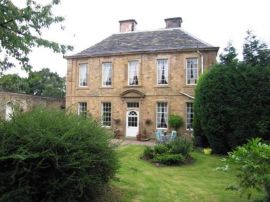
There can become without a doubt that insulating material needs to be of major importance when contemplating new house construction. Slipform stone homes are no exception to this rule. Helen and Jeff Nearing, early proponents on this stone building technique, claimed that will their New Britain homes were secure year-round without many thought directed at insulating material - indeed, their own first slipform house was built right into a Vermont cliff-face, and produced use of blank ledge as one wall. While the particular thermal mass involving the earth itself surely served to maintain house temperatures above freezing, by modern standards, there may be undoubtedly of which this uninsulated natural stone house would help to make to get a chilly wintertime. Insulation is key to efficiency, in addition to there are a number of techniques to insulate a new slipform stone construction.
Stud Wall and even fiberglass batting
One particular common approach to the question of insulation in rock and concrete set ups is the structure of a standard framed stud wall towards the interior wall structure. This framed wall is then protected in the classic manner, using fiber glass batting insulation among the studs. Although this approach performs fine, and brings the comfort regarding familiarity to a lot of constructors, the construction from the stud wall is usually wasteful, and typically the studs themselves provide the ability for heat bridging, significantly minimizing the entire insulation associated with the house.
Rigid Insulation
Rigid padding offers a range of opportunities when it comes to insulating slipform rock homes. Rigid insulating material, correctly installed, enables for no cold weather bridging and makes a tight envelope at home. There are a new number of techniques for building this variety of insulation most suitable into the wall space themselves, either by simply laying the insulating material inside the forms since you build, or perhaps replacing the interior kinds entirely with nailbase - rigid padding mated with OSB, plywood, as well as drywall on one side.
Adding rigid padding after the wall space are standing may present difficult to be able to the typical owner/builder. The biggest challenge the following is figuring away how to protect the insulation to the stone/concrete wall. One of the best ways to do this particular is using furring strips - slim boards attached to be able to the wall, in to which screws may be driven. A new powder-actuated nail gun, or ramset can be used to attach the furring strips for the wall membrane. Another approach is to embed the furring strips in the concrete itself when you build the surfaces. Drawback to this approach is usually that the furring strips will weaken and rot aside over the many years, leaving gaps in the wall and weakening the overall composition. Fully removing typically the furring strips in addition to replacing them can be a concern.
Spray-on Insulation
This nifty product might be used to apply a seamless part of insulating froth directly onto typically the interior from the slipform wall. The efficiency would then become cut, sanded, or squashed flat ahead of a finish coating of sheetrock is applied. Both involving the aforementioned approaches existing difficulties when that comes to hanging anything on typically the walls, as there are not any interior studs with regard to screwing or nailing into. Strategically placed furring strips could be used intended for this purpose.
Generally there are https://dhallwalling.uk/best-garden-walling-yorkshire/ of other conventional and non-traditional approaches that you go after in insulating the slipform stone brickwork structure, require 3 options are simple to implement plus proven in a lot of homes on the quantity of years. Whichever you decide, it's very important to ensure that your slipform stone house is snug and well covered.
